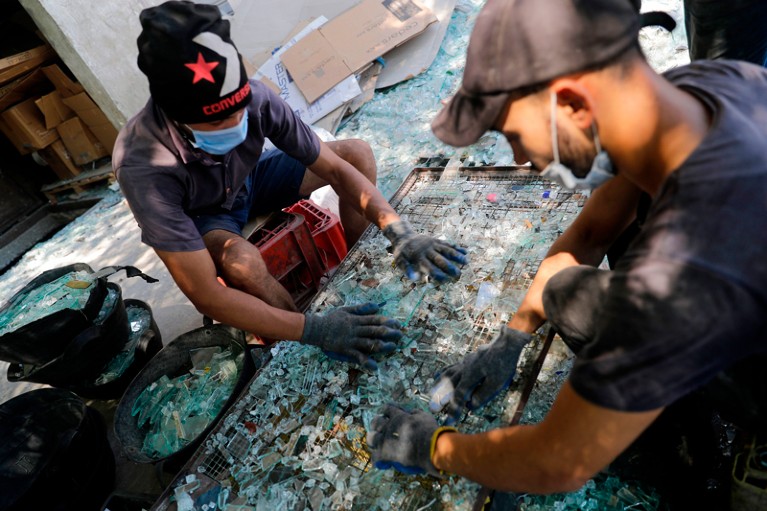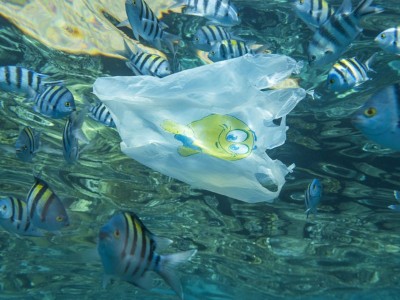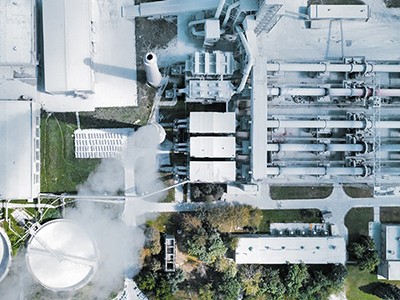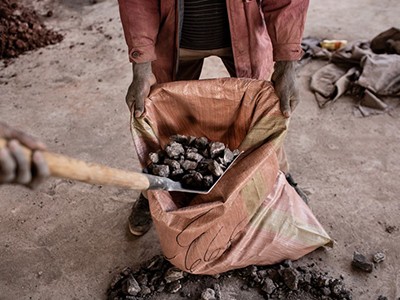
Workers sort out glass for recycling following an August 2020 explosion that damaged more than half of Beirut.Credit: Joseph Eid/AFP/Getty
Glass can be recycled infinitely without losing any of its properties. Why, then, are most countries — with the exception of those in Europe — still burying most of their glass as landfill by the tonne? In 2018, the United States alone offloaded almost 7 million tonnes of glass into landfill sites, accounting for 5.2% of all solid municipal waste, according to the US Environ-mental Protection Agency.
The push to cut plastics use is accelerating the search for new materials, especially for containers that can hold liquids. But glass is an existing material that could be the star of a net-zero carbon economy.
Worldwide, glass manufacturing produces at least 86 million tonnes of carbon dioxide every year. But most of this can be eliminated when glass is recycled, and existing technologies could turn glass manufacturing into a mostly carbon-free process. What needs to happen is for countries to stop sending glass to landfill sites, and to make glass recycling mandatory.
Chemistry can make plastics sustainable – but isn’t the whole solution
Glass is made by heating limestone, sand and soda ash to 1,500 °C. This heat comes from natural gas, and it accounts for between 75% and 85% of the carbon emissions from glass manufacturing. The remaining emissions are a by-product of the chemical reactions between the raw materials. But some of these materials can be replaced with crushed recycled glass, known as cullet. When cullet is melted, no CO2 is released. And furnaces don’t have to burn so fiercely to melt glass as to melt the raw materials, offering further carbon savings. According to the European Container Glass Federation (FEVE), an industry group based in Brussels, 10% more cullet in a furnace lowers CO2 emissions by 5% compared with making glass entirely from raw materials.
As with most forms of recycling, some caveats apply. The type of glass used to make windows — known as flat glass — cannot contain impurities, unlike glass used in many other applications. So it’s not possible to melt down jam jars to get a window pane. But flat-glass cullet can be used to make more flat glass.
Some questions will need further research. For example, governments will need to know the monetary cost of boosting systems for glass collection and recycling, so that they can allocate appropriate resources. Furthermore, glass is heavier than plastic, so using it as a replacement will probably add to transport costs and emissions, and that, too, needs to be understood.
Concrete needs to lose its colossal carbon footprint
When it comes to glass recycling, Europe is the world’s most advanced region by some margin, and has ambitions to be even better. Researchers could study how Europe’s recycling scheme came about, its strengths and weaknesses and whether there are lessons for other countries. Three-quarters of glass used for containers such as bottles is collected for recycling across all 27 member states and the United Kingdom. As a result, new glass made in the European Union already contains some 52% recycled material. The glass-container industry has set itself a target of collecting 90% of all waste container glass in the EU by 2030.
But other countries are not where they need to be. Moreover, data on glass recycling are difficult to find, partly because most countries are not reporting what they are doing. There seems to be no international body that collects glass-recycling data. That needs to change.
That said, national efforts are under way to improve collection and recycling rates. The United States recycles, on average, just 31% of its glass containers, but the Glass Packaging Institute, a trade association based in Arlington, Virginia, is pushing to increase that to 50% by 2030 (to achieve that, 56% of all waste glass must be collected). Similarly, a project run by the Glass Recycling Company in Johannesburg increased the recycling rate across South Africa from 18% in 2005–06 to 42% in 2018–19, including boosting the use of returnable bottles. But elsewhere — in Brazil, China and India, for example — authorities are silent, or, at the very least, are not reporting their plans and ambitions.
More countries need to pass laws to reduce waste and eventually stop sending glass to landfill. That will automatically create greater incentives for glass to be recycled. Europe already mandates that 70% of waste building and construction materials are recycled. The remainder currently ends up being used as aggregate for road filling or other basic building processes; this is a huge waste of a valuable resource.
Lithium-ion batteries need to be greener and more ethical
Carbon can also be saved by decarbonizing the process of melting the chemical mix during manufacturing. A demonstration project called Furnace for the Future, run by FEVE, makes glass using electricity instead of natural gas to heat recycled glass cullet. If the electricity source were fully decarbonized, it would mean that the entire process of glass-making would effectively be carbon-free.
Glass is an essential material. And it is possible for its manufacture to become almost carbon-free in a relatively short time. But legislation is required to ensure that it is properly collected and recycled, and that it doesn’t end up in landfill. Communities and companies should be helped to create infrastructure to collect glass and recycle it. The answers are there, and they are relatively simple. They need to be put into practice — and we can all raise a glass to that.

 Concrete needs to lose its colossal carbon footprint
Concrete needs to lose its colossal carbon footprint
 Lithium-ion batteries need to be greener and more ethical
Lithium-ion batteries need to be greener and more ethical
 Chemistry can make plastics sustainable – but isn’t the whole solution
Chemistry can make plastics sustainable – but isn’t the whole solution
 Protect global supply chains for low-carbon technologies
Protect global supply chains for low-carbon technologies
 Nature Index 2021 Materials science
Nature Index 2021 Materials science






